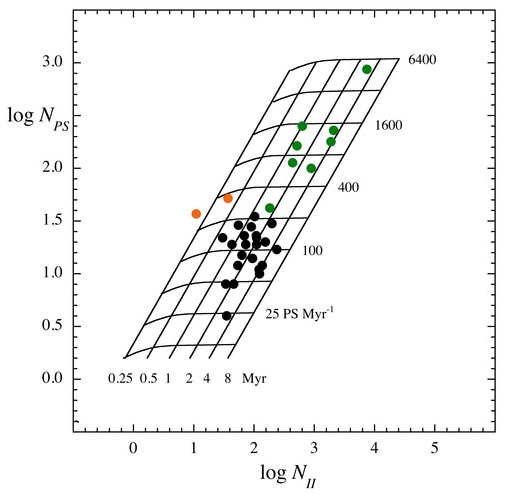|
A model of protostar mass and luminosity evolution gives new estimates of cluster age, protostar birthrate, accretion rate and mean accretion time. In this model, protostars are born at a constant rate and grow by core-clump accretion. They stop accreting with equal likelihood and become pre-main sequence (PMS) stars. The protostar and PMS populations, and their distributions of mass and luminosity, are predicted as functions of time. The model reproduces the initial mass function, and distributions of protostar luminosity observed in nearby star-forming regions. It predicts that massive stars start accreting earlier, and stop accreting later, than do most low-mass cluster stars. Cluster ages and birthrates are derived from the observed numbers of protostars and PMS stars, and from the modal value of the protostar luminosity. In 31 embedded clusters and complexes the inferred age is 1-3 Myr, in accord with estimates based on optical spectroscopy and evolutionary tracks. The typical birthrate is 60-180 protostars per Myr for clusters, and thousands of protostars per Myr for complexes. The core-protostar accretion rate is ~ 1 solar mass per Myr, and the mean accretion duration is ~ 0.2 Myr, each in accord with estimates for low-mass star formation.
|

